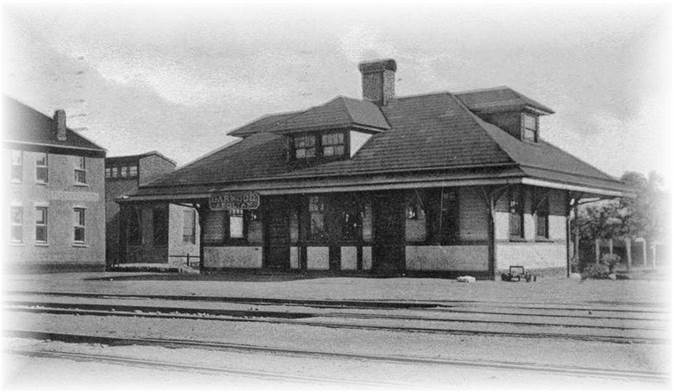
Train Station History
Garwood Historical Committee
Did You Know?
The establishment and growth of Garwood is largely connected to the railroad.
Garwood grew up with the Central Railroad of New Jersey (CRRNJ). In the early 1890’s, business- and railroad man Samuel Garwood and his colleague John Rogers Maxwell, then-president of the CRRNJ, acquired large tracts of land in what is now the borough and formed the Garwood Land and Improvement Company in 1891. The name “Garwood,” which was applied to the area some years before the incorporation of the Borough in 1903, was said to be in recognition of Samuel Garwood, the chief stockholder of the Land Company. Garwood’s first mayor, Frank W. Morse, was part owner of the company.
The Garwood Land and Improvement Company provided industrial building sites that came with the lucrative access to the railroad. When the borough was first developing, it was billed as the “new town on the Central Railroad of New Jersey, between Westfield and Cranford.” Two of the largest regional manufacturers at this time were the Singer Sewing Machine Works in Elizabeth and the Potter Press Works in Plainfield; both of which perpetuated the establishment and growth of dedicated rail stations: The Grant Avenue station in Plainfield and The Elizabethport station in Elizabeth. Garwood’s station would come to rival these two in benefitting the factories and industries of Garwood. Soon enough, Factories for Hercules Tubeworks, Thatcher Furnace, Aeolian, Weber Piano, and Pianola Company would all be built alongside the railroad tracks. Of course, homes for the factory employees would be built nearby as well.
By the time Garwood’s first train station opened in August 1892, many of the town’s streets had been graded and put into shape and over 50 houses had been built. The Hall Signal Company building on South Avenue was well underway as was the framework for what was to house the American Steel Wheel Company (the location of C. and C. Electric Motor Company in December 1893). In 1905, according to the New Jersey State Census, Garwood was home to 564 inhabitants and 114 houses. And by 1915, those numbers would more than double to 1642 residents and 231 houses! So busy and important was the new train station to Garwood, that an extension was added in 1918.
Sadly, a fire destroyed the original station early in the morning of June 30, 1976. It was never rebuilt.
Check out our Garwood Historical Committee’s “Garwood and The Railroad” photo slideshow with 70 images now on the Borough’s website:https://garwood.org/historical-railroad.
Contact the Garwood Historical Committee for more information at GARWOODHISTORY@GARWOOD.ORG.
